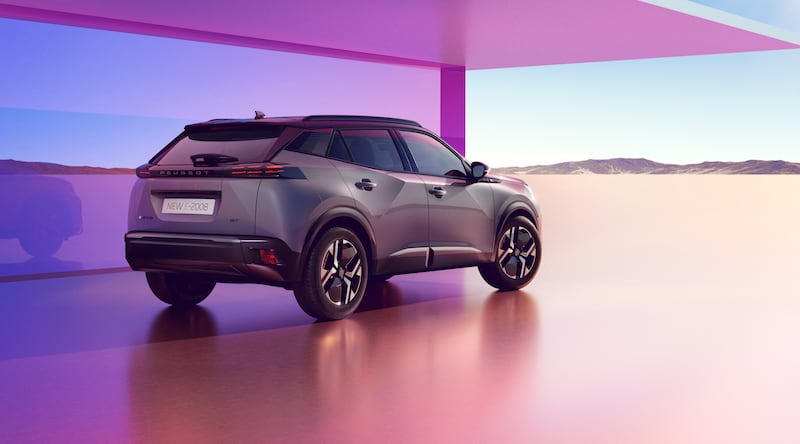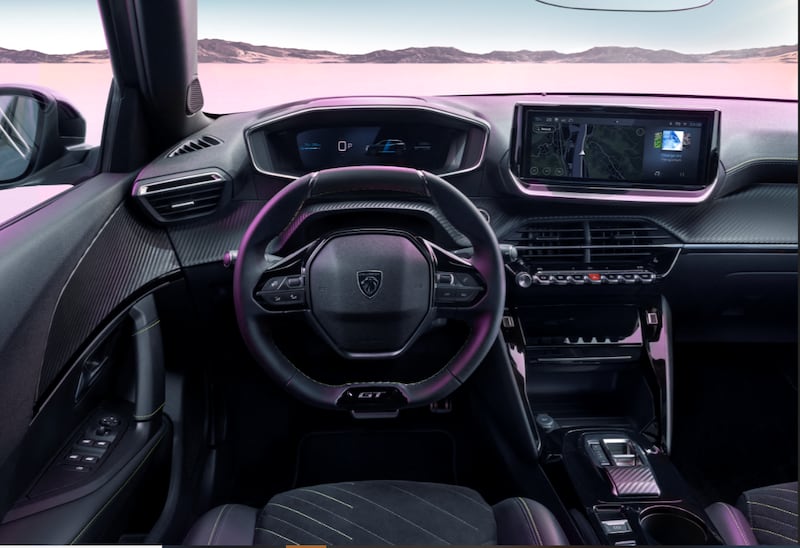The Peugeot 2008 has been a roaring success for its manufacturer since it was first launched in 2019. In fact, at one point in 2021, the 2008 was the best-selling small crossover in Europe, and the fifth-best selling car overall.
Since then, it has slipped in sales, dropping out of the European top-10 sales chart, and its Irish sales fell by 30 per cent from 2021 to 2022, so Peugeot will be hoping that this relaunch will also re-light the fire under 2008 sales.

On the styling front, the changes are only of the small-detail variety. The 2008 badge on the nose sits a little lower, there are new, more deeply-set, headlights, a broader, more V-shaped grille and the daytime running lights at the sides of the front bumper are now in the shape of three “claw marks” rather than the single descending fang that used to be there (both were a reference to Peugeot’s lion badge).
At the back, the brake lights look a little more complex than before, and the 2008 now gets the newer Peugeot “shield” badge, which with its lion’s head in profile, is something of a 1960s throwback and there are new, more skeletal “e” badges for the full-electric version.
READ MORE

Inside, there are even fewer changes, but the big central 10-inch touchscreen has been updated with new, more easy-to-use, software while there’s an upgrade for the 10-inch digital driver’s instrument panel too, and both screens are now standard across the range.
The bigger changes are underneath, and most especially for the electric e-2008. This crossover EV has been one of the major success stories for Peugeot in recent years, and it’s still the third-best selling electric crossover in Europe. It’s managed to reach that height with some fairly ordinary performance figures – the e-2008′s 50kWh (45kWh useable) battery gave it an on-paper range of 312km on a full charge, but in our hands its real-world range was closer to, and frequently under, 250km.
Now, the e-2008 is getting the same 54kWh (51kWh useable) battery as the newly-launched Jeep Avenger (with which it shares a platform) which brings the range up to a claimed 405km – the guts of an extra 100km to play with. Efficiency has also been improved, as the new 156hp electric motor (an upgrade from the previous 136hp motor) is more efficient overall, and the e-2008 carries over the heat-pump heating system which was made standard in 2021.
As standard, that battery will charge on AC power at 7.4KW, which can be optionally upgraded to 11kW. DC fast charging remains capped at 100kW, as before, but with the relatively compact battery that still means a reasonable 0-80 per cent charging time of 30 minutes, assuming you can find a working DC charger that’s actually putting out the full 100kW.
As before, there will still be combustion options for the 2008, including 100hp and 130hp versions of the long-serving 1.2-litre PureTech three-cylinder turbo petrol engine, as well as a new addition – a hybrid version of that engine, with 136hp and, so claims Peugeot, 15 per cent lower fuel consumption and as much as 50 per cent of your urban driving done on the battery, with the engine powered off.
The new 2008 and e-2008 will go on sale before the end of this year.














